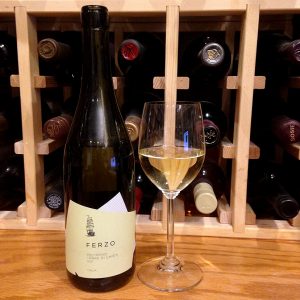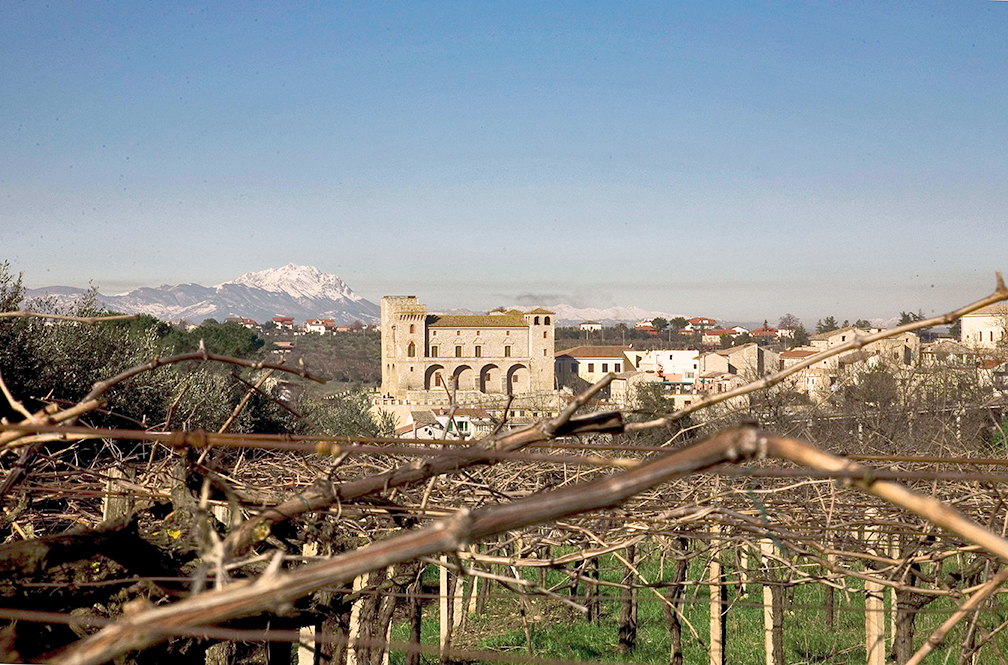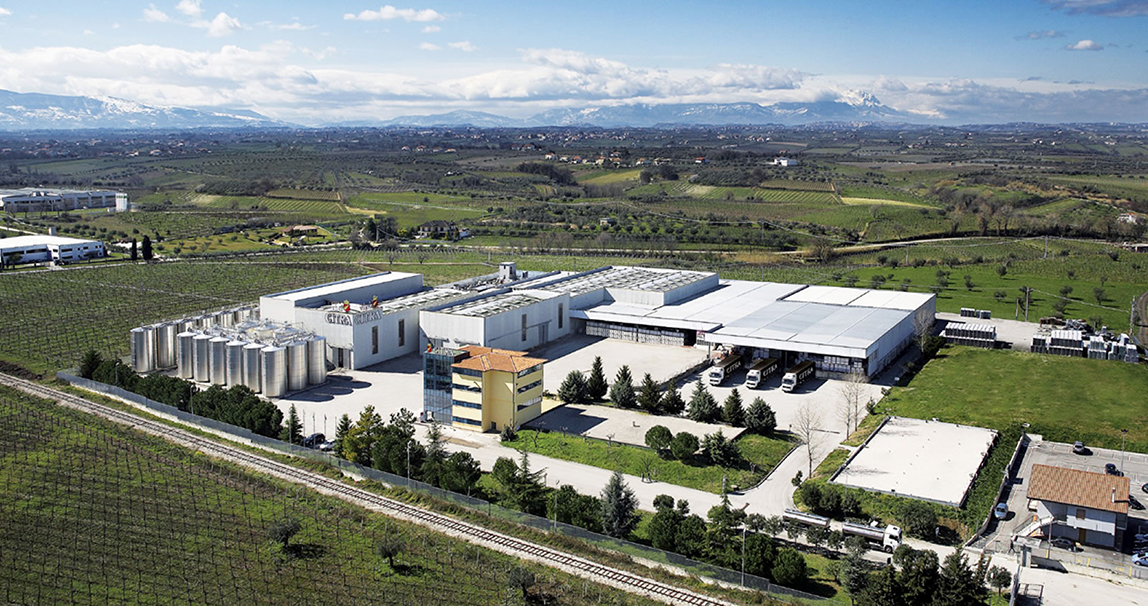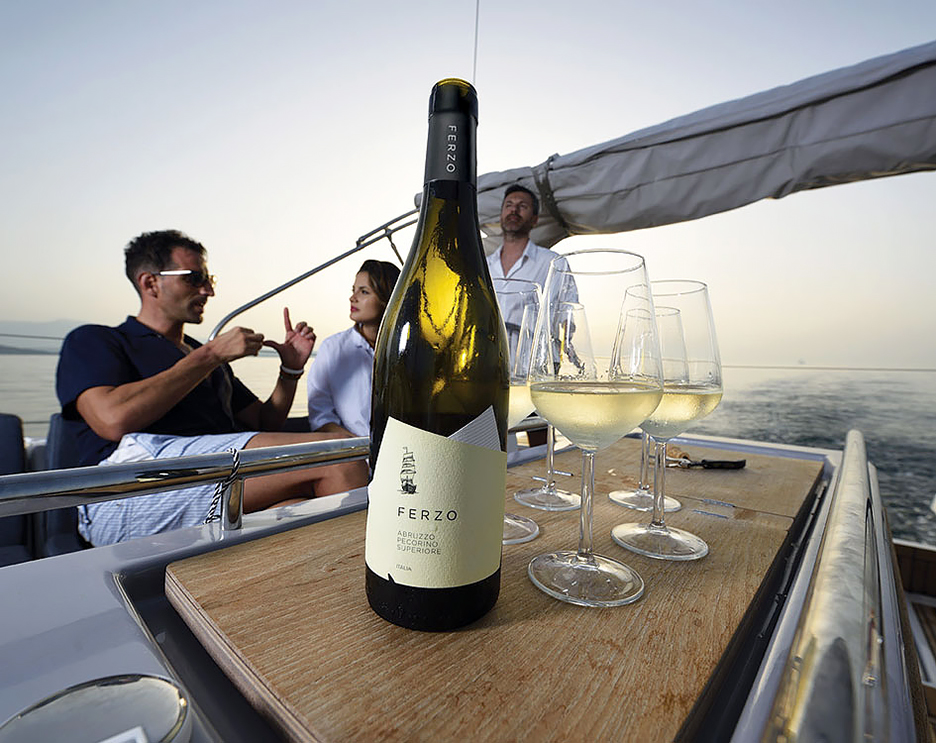Medium straw-gold color; tropical fruit, pineapple, sage, flowers on the nose; pineapple, peach, green apples, apricot, spice on the palate.

Dry; fresh and velvety in the mouth; good acidity and minerality. A bushel of fruit on the initial attack, it evolves to minerality and a touch of oiliness on the finish. That is an interesting journey from one sip of wine. No oak—fermented and finished in stainless steel; 13% ABV.
Pecorino is a grape primarily grown in the Abruzzo and Marche areas of Italy’s east coast. It ripens early and has strong resistance to downy and powdery mildew, all good things. The grapes also are generous with acidity and have a high sugar content, making pecorino useful in the winery. Its drawback is low yields.
Pecorino is Italian word for “sheep” or “little sheep.” Part of the grape’s possible backstory is it got its name because sheep enjoy eating the crunchy, sweet grapes. Pecorino also is a tangy hard cheese made from sheep’s milk. Pecorino wines (such as this one) pair very well with pecorino cheeses (there are six main varieties of pecorino cheese, with Pecorino Romano likely the best known in the United States).

This wine comes from Abruzzo’s Terre di Chieti IGT, an Italian growing region in Abruzzo established in 1995. Although the ancient grapes date back to early Roman times, pecorino vines were feared extinct in the mid-20th century until a producer researching long-forgotten native vines in the 1980s found some growing in one vineyard. By the mid-1990s, there were enough vines to begin making wine.
In the 21st century, the varietal enjoys exponential growth, moving also into Umbria and Tuscany, although Abruzzo accounts for 56% of plantings and Marche 40%. Vines do particularly well in high altitudes where there is good sunlight exposure and cool nights. As the world searches for new tastes and new places to grow grapes, pecorino has enjoyed a return to wine cellars of folks expanding beyond universal varietals you can find in any wine/grocery store.
Ferzo is part of Codice Citra, a consortium of nine wine cellars and some 5,000 winegrowers created in 1973 in the province of Chieti, the historic cradle of Montepulciano d’Abruzzo and Trebbiano d’Abruzzo. The company distributes wine in 50 countries and uses a fast distribution network to get young, fresh wines such as this effort to market. Wine Spectator named Citra as one one of the “20 World’s Finest Value Brands.” Today, the Citra cooperative numbers some 10,000 growers. Citra is one of four large co-op wineries that make nearly 80% of wine in Abruzzo.

Ferzo’s website explains its name: “A ferzo is a patch of fabric that is stitched together with others to create a sail or a flag. The union of the finest viticultural ‘patches’ in Abruzzo gives life to Ferzo, a single grand label that embraces the best of region’s indigenous grape varieties.”
Codice Citra Ferzo Pecorino Terre di Chieti 2017 is filled with fruit, and delivers some depth and surprises. This is a serious white rather than hedonistically delicious wine. It engages the mind. It has intriguing complexity. There is a wave of minerality touching on metallic on the finish. All of which are reasons this once virtually forgotten grape has made historic comeback and should be on your wine bucket list of tasting experiences. This will be seriously good with cheese, especially cheese made from sheep milk. Also pair with hors d’oeuvres; seafood and fish; shellfish; white meats. $18-26
Codice Citra website (does not have Ferzo pages, but tells the co-op’s story)
Ferzo does not have photos of its vineyards and winemakers, but it does have some nice sailing images



